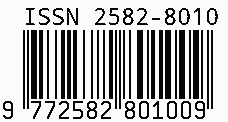
International Journal of Leading Research Publication
E-ISSN: 2582-8010
•
Impact Factor: 9.56
A Widely Indexed Open Access Peer Reviewed Multidisciplinary Monthly Scholarly International Journal
Plagiarism is checked by the leading plagiarism checker
Call for Paper
Volume 6 Issue 12
December 2025
Indexing Partners



















The Evolution of SaaS-Based HR Solutions: A Study of Workday’s Impact on Business Operations
| Author(s) | Ilango Kessavane |
|---|---|
| Country | United States |
| Abstract | This study examines the evolution of Software as a Service (SaaS)-based Human Resource (HR) solutions, focusing on the transformative impact of Workday on business operations. As organizations increasingly shift towards cloud-based technologies, Workday has emerged as a pivotal player in streamlining HR functions, enhancing data accessibility, and improving user experience. This paper analyzes the features and capabilities of Workday, including its unified suite for human capital management, recruitment, talent management, and financial planning. Through case studies and qualitative data, the research highlights how Workday’s innovative approaches have enabled organizations to adopt agile HR practices, drive operational efficiencies, and enhance strategic decision-making. Additionally, the study discusses the challenges companies face during the transition to SaaS solutions and the implications for HR professionals in adapting to a digital workforce. Ultimately, this research underscores the significance of Workday in shaping the future of HR technology and its broader implications for business operations. |
| Keywords | SaaS, Workday, Human Resource Solutions, Business Operations, Cloud Technology, Human Capital Management, Talent Management, Digital Transformation |
| Field | Business Administration |
| Published In | Volume 6, Issue 1, January 2025 |
| Published On | 2025-01-08 |
| Cite This | The Evolution of SaaS-Based HR Solutions: A Study of Workday’s Impact on Business Operations - Ilango Kessavane - IJLRP Volume 6, Issue 1, January 2025. DOI 10.5281/zenodo.15026577 |
| DOI | https://doi.org/10.5281/zenodo.15026577 |
| Short DOI | https://doi.org/g88f5r |
Share this


CrossRef DOI is assigned to each research paper published in our journal.
IJLRP DOI prefix is
10.70528/IJLRP
Downloads
All research papers published on this website are licensed under Creative Commons Attribution-ShareAlike 4.0 International License, and all rights belong to their respective authors/researchers.

